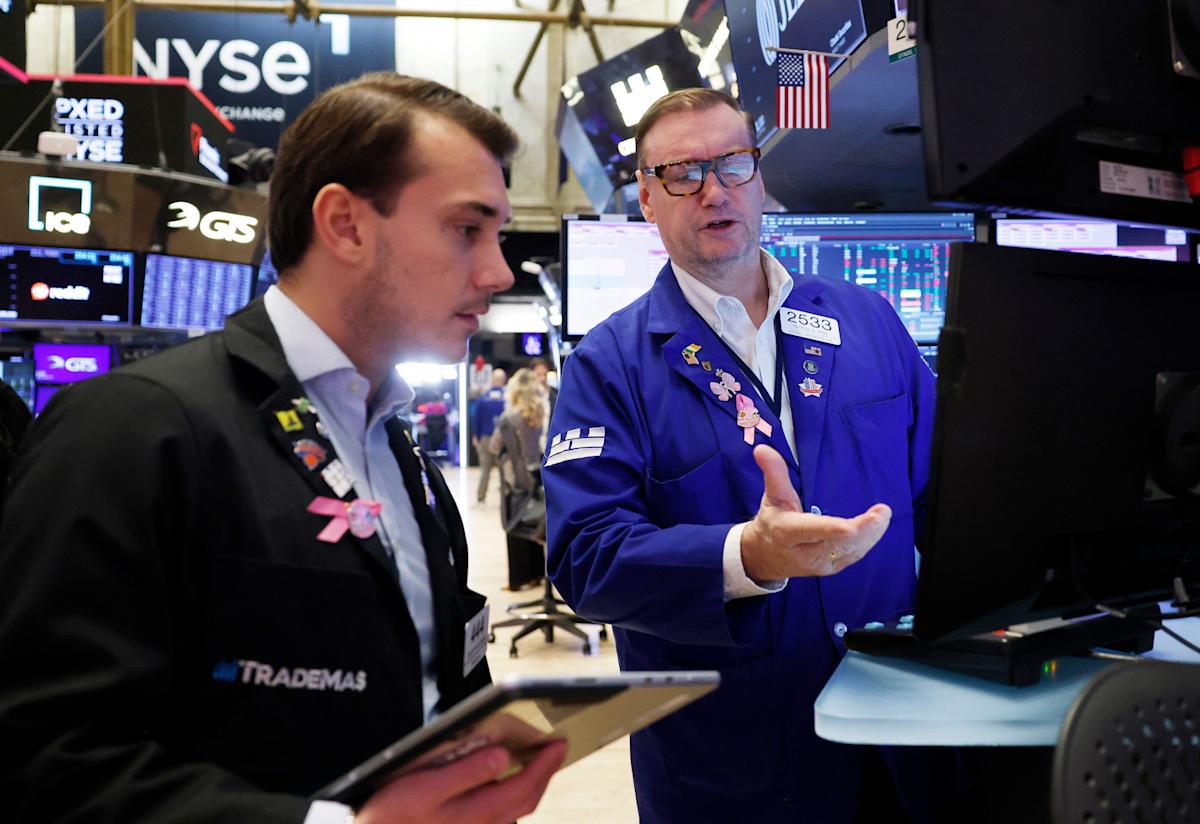Wall Street opened in the red on Tuesday as China hit back at US president Donald Trump its trade spat with the US, and as big Wall Street’s banks kicked off earnings season. The FTSE 100 (^FTSE) and European stocks were also in risk-off mode as the International Monetary Fund (IMF) revealed that UK inflation is set to rise to the highest in the G7.
Inflation is set to surge to the highest in the G7 this year and in 2026, according to the latest forecasts from the International Monetary Fund (IMF) on Tuesday. Economists now predict UK inflation will average 3.4% in 2025, up from a forecast of 3.1% back in April. It is then expected to average 2.5% in 2026, up from 2.2% forecast in April.
In contrast, inflation in the euro area is forecast to average 2.1% this year, and drop to 1.9% next year.
However, the UK is forecast to be the second-fastest growing of the world’s most advanced economies this year, overtaking Canada, according to new projections from the International Monetary Fund (IMF). The rates of growth remain modest at 1.3% for this year and in 2026, but that outperforms the other G7 economies apart from the US in 2025.
Also in focus is third quarter earnings season, which kicked off in earnest on Tuesday morning with results from JPMorgan Chase (JPM), Citigroup (C), Goldman Sachs (GS), and Wells Fargo (WFC).
Read more: Trending tickers: Broadcom, Ericsson, Navitas, Intel and BP
Goldman Sachs (GS) and JPMorgan (JPM) shares dipped even as their quarterly profits were boosted by a flurry of Wall Street dealmaking. Wells Fargo (WFC) stock, meanwhile, jumped in early trading as the bank’s profit also surged.
Traders also raised bets that the Bank of England (BoE) will cut interest rates after official figures showed slowing wage growth and UK unemployment at a four-year high.
According to the Office for National Statistics (ONS), the UK jobless rate rose to 4.8% in June to August, its highest level since 2021. Meanwhile, regular wage growth fell to 4.7% during the three months, down from 4.8% in the previous quarter, a three-year low. Adding to the disappointing picture, the number of payrolled employees is estimated to have fallen by 10,000 in September, and by 100,000 over the last year.
Money markets indicate there is a 38% chance of a reduction in borrowing costs by the end of 2025, compared with a 28% probability priced in on Monday.
Rob Wood, chief UK economist at Pantheon Macroeconomics, said markets “will rightly price a greater chance” of a rate cut by the end of the year, given policymakers “have placed a lot of focus on wage growth and inflation to justify another cut”.
